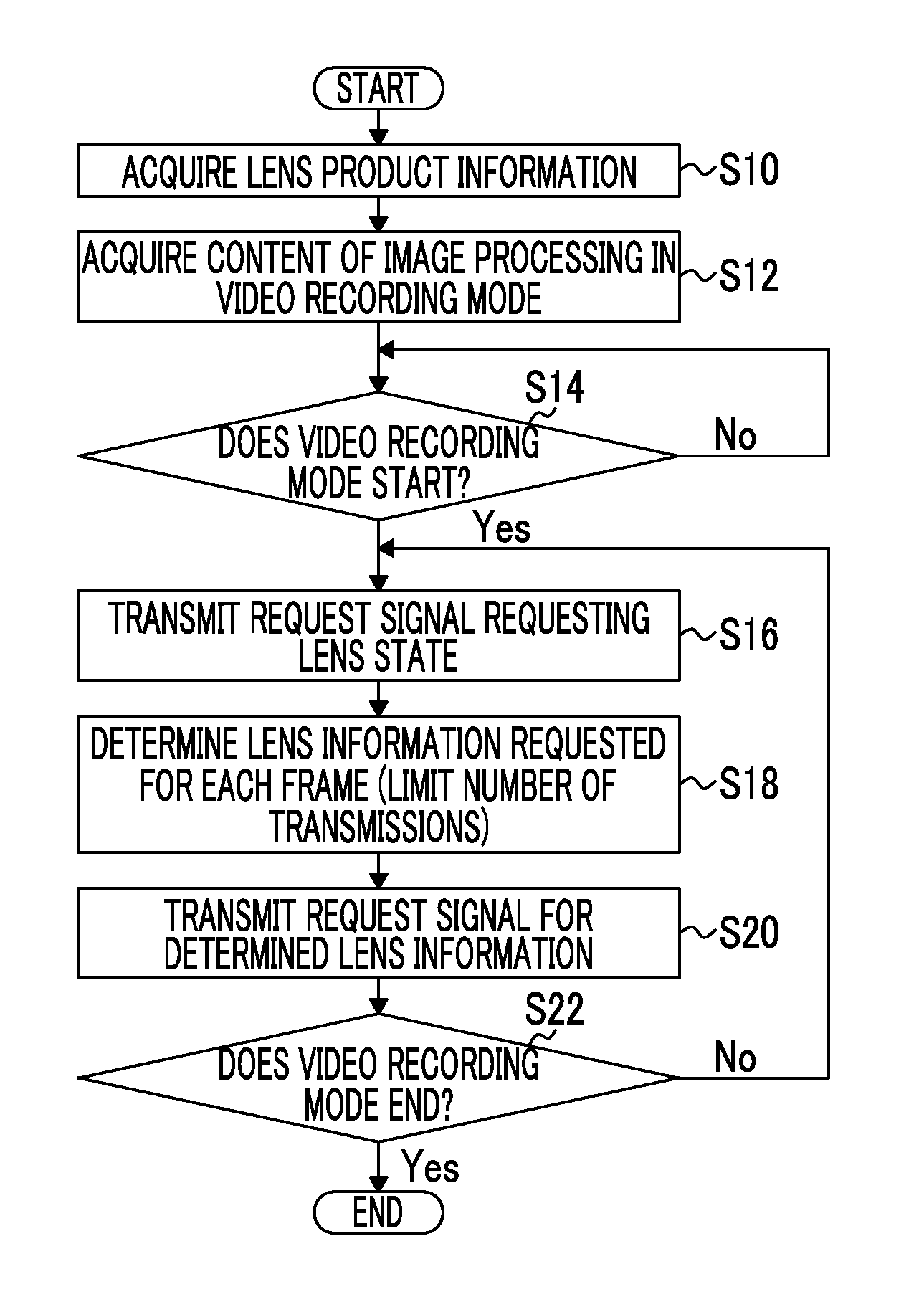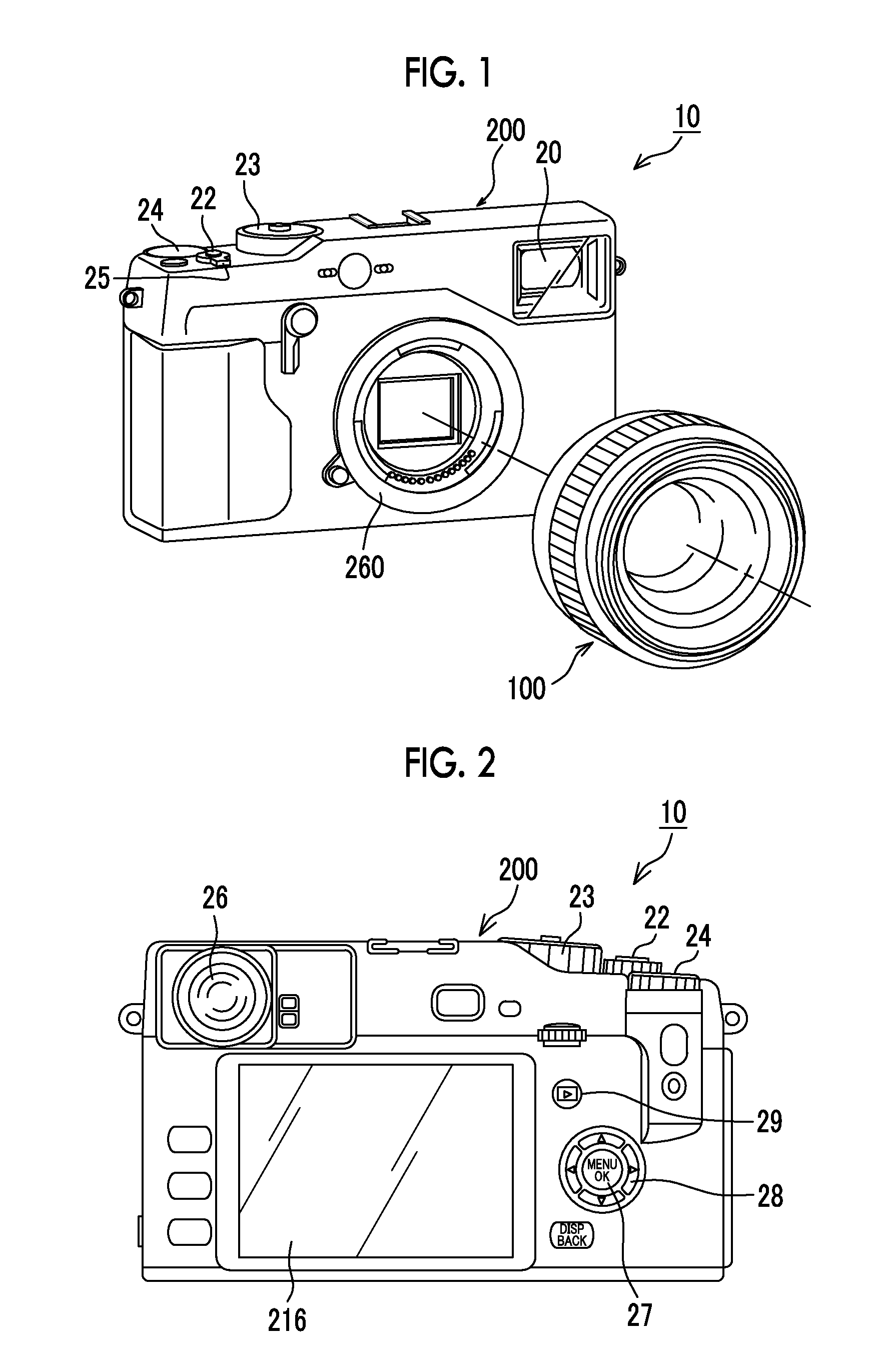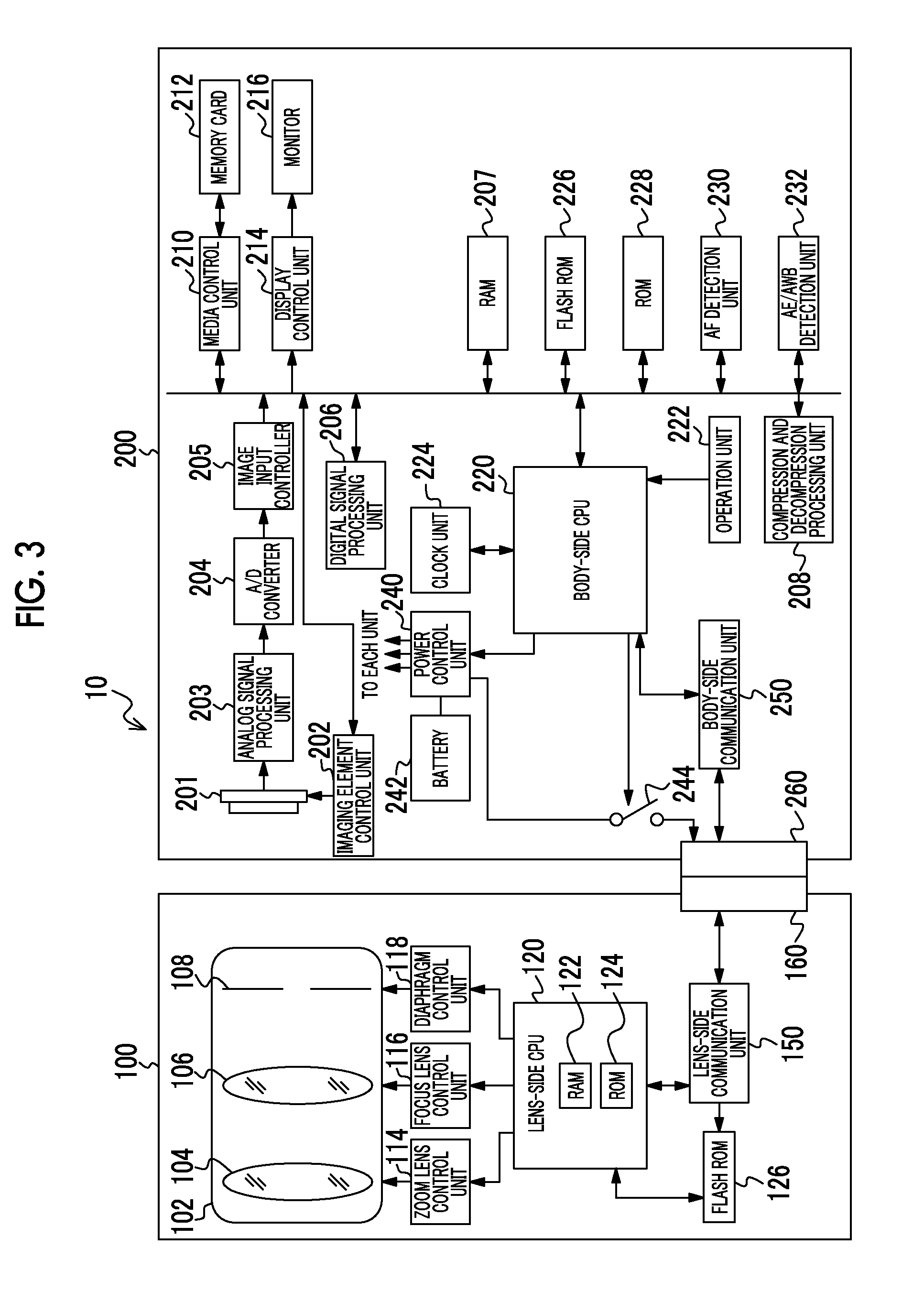Camera system, camera body, and communication method
a camera body and camera technology, applied in the field of camera systems and camera bodies, can solve the problems of large increase in the amount of data from the interchangeable lens to the camera body, increase in the and increase in the cost of the camera body, so as to achieve the effect of increasing the probability of failure of communication between the camera body and the interchangeable lens
- Summary
- Abstract
- Description
- Claims
- Application Information
AI Technical Summary
Benefits of technology
Problems solved by technology
Method used
Image
Examples
first embodiment
[0127]FIG. 6 is a timing chart illustrating a communication method in the synchronous communication mode according to the present invention.
[0128]This synchronous communication mode is a new communication mode adopted in the video recording mode, and a communication format in which a response to a request from the camera body 200 is performed in synchronization with the synchronization signal VSYNC ((a) of FIG. 6). This synchronous communication mode is a communication mode in which the number of transmissions of the request signal (first request signal) relating to acquisition of various lens information in units of frames is limited.
[0129]Here, the request signal (first request signal) relating to the acquisition of the lens information is considered to refer to a request signal requesting the interchangeable lens 100 to provide the zoom position, the focus position, or the diaphragm value (a request signal relating to the acquisition of the lens information of a narrow sense) and...
second embodiment
[0183]FIG. 8 is a timing chart illustrating the communication method in the synchronous communication mode according to the present invention.
[0184]The synchronous communication mode of the second embodiment is a communication format in which a response to a request from the camera body 200 is performed in synchronization with the synchronization signal VSYNC ((a) in FIG. 8) in the video recording mode. This is the same as the first embodiment illustrated in FIG. 6 in that the synchronous communication mode is a communication mode in which the number of transmissions of the request signal (first request signal) relating to acquisition of various lens information in units of frames is limited. However, they differ in that a request signal requesting a lens state for confirming the lens state of the interchangeable lens 100 is not transmitted, and the number of transmissions of the request signal relating to the acquisition of the lens information is limited to 2 or smaller.
[0185]Now,...
PUM
 Login to View More
Login to View More Abstract
Description
Claims
Application Information
 Login to View More
Login to View More - R&D
- Intellectual Property
- Life Sciences
- Materials
- Tech Scout
- Unparalleled Data Quality
- Higher Quality Content
- 60% Fewer Hallucinations
Browse by: Latest US Patents, China's latest patents, Technical Efficacy Thesaurus, Application Domain, Technology Topic, Popular Technical Reports.
© 2025 PatSnap. All rights reserved.Legal|Privacy policy|Modern Slavery Act Transparency Statement|Sitemap|About US| Contact US: help@patsnap.com



